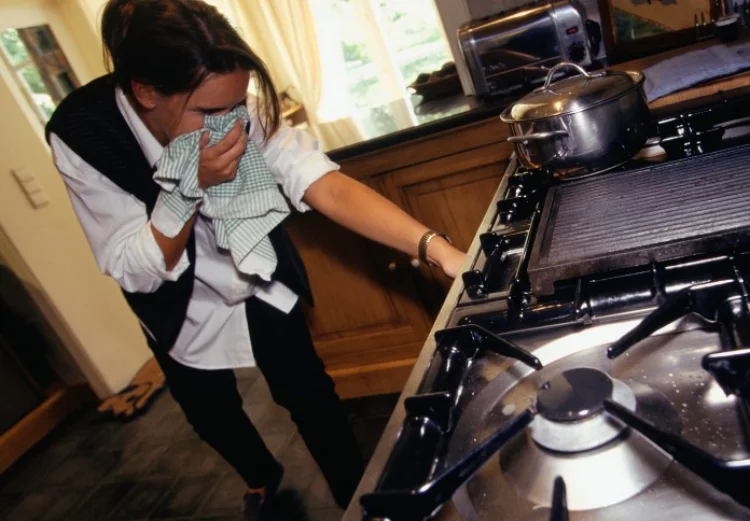Carbon monoxide (CO) is a colorless gas with a density close to that of air. It is produced by the incomplete combustion of carbon-containing materials widely found in domestic and industrial environments. If it accumulates in an enclosed space without adequate ventilation, it can have a poisonous effect on people. Depending on the concentration of carbon monoxide in a certain space, it can even lead to fatal poisoning. In today’s article, we will answer the question “What effect does carbon monoxide have on the body?”. We will also take a detailed look at what carbon monoxide poisoning is and what the most common causes are.
What effect does carbon monoxide have on the body?
Carbon monoxide poisoning occurs when a sufficiently large amount of the gas toxic to the human body is inhaled. Entering the bloodstream, carbon monoxide binds to hemoglobin, which contributes to oxygen saturation of every cell of the body. Thus, the compound carboxyhaemoglobin is produced. The oxygen supply from hemoglobin to the cells and tissues is thus prevented. The conversion of 50% of the hemoglobin in the human body to carboxyhemoglobin results in suffocation, coma or even death.
What are the most common causes of carbon monoxide release?
Carbon monoxide poisoning can occur in a variety of incidents. It negatively affects the body in a matter of minutes. Poisoning can also happen gradually when a person has been repeatedly exposed to the gas in smaller concentrations. Fires in domestic and industrial premises are some of the most common situations in which the release of the deadly gas occurs. Poisoning is also possible at home when gas cooking appliances are used. You also have to be extremely careful with the wood stove! Another common cause of CO poisoning are vehicle exhaust gases. Especially when vehicles are in relatively enclosed and small spaces such as garages. This is why you need to never start your car before you have opened the garage door! Gas concentration increases extremely quickly when there’s no free access to fresh air and a fatal accident can happen within minutes, so never underestimate the situation!
What are the signs and symptoms of poisoning?
As already mentioned, carbon monoxide has no smell or color, and sometimes its presence can go unnoticed. There are some typical symptoms, however, that people get within minutes of being poisoned, when the concentration of the gas is very high. In other cases, they may be absent or not always obvious, especially during low-level exposure.
Here are the most common signs and symptoms of carbon monoxide poisoning:
- dizziness, confusion
- headache
- shortness of breath, difficulty breathing
- coughing
- stomach pain
- nausea and vomiting
- tinnitus
- watery eyes
- loss of consciousness
At low concentrations, headache, confusion, nausea or vomiting are observed. As concentration increases, these symptoms progress to unconsciousness, coma and convulsions, and at very high concentrations death occurs within minutes.
How to provide first aid for carbon monoxide poisoning?
If you suspect that someone has been poisoned with carbon monoxide, you should seek medical attention immediately. In cases of mild poisoning (symptoms such as dizziness, headache or nausea are visible) it is necessary to get the person out in the fresh air as soon as possible. Observe if changes occur and to tell the doctor about them when they arrive.
In severe cases, call an ambulance immediately and try to make the person as comfortable as possible – take them outdoors or at least to an open window so that breathing can be restored. If the person is shivering, wrap them in a blanket or other clothing. If they are not conscious, turn them on their side. Under no circumstances should you try to cope without medical help. In many cases, severe complications can occur within minutes – brain, respiratory and cardiovascular. Timely and proper medical attention can prevent many of these!
Can you prevent carbon monoxide poisoning?
Yes, there is a way to prevent such dangerous poisoning, especially when it comes to our home. The first thing is to be aware of the dangers and identify any appliances in your house that could potentially lead to the release of carbon monoxide. All appliances should be carefully installed and if necessary repaired by a qualified engineer. Do not attempt to do this yourself. Also ensure that all chimneys and flues are cleaned regularly by a qualified cleaner.
To protect yourself from carbon monoxide poisoning caused by exhaust fumes, do not leave your car’s engine running in the garage, or running petrol lawn mowers.
Other safety tips
Here are a few more safety tips worth paying attention to:
- The safest way to know if there is a carbon monoxide release in your home is by installing an alarm to alert you. These are available on the market. If this happens, turn off all appliances, open the windows wide and leave your home until specialist workers come to fix the problem.
- Under no circumstances use gas stoves to keep you warm!
- If you work with chemicals that contain methylene chloride (various solvents), then always wear a protective mask.
- When in a confined space, never burn coal or wood!






